Menu
Your cart is empty
Looks like you haven't added anything to your cart yet
The original Deck Foot Anchor has been a favorite solution since 2012 for floating decks. The new Ledger Deck Foot Anchor is our answer for light weight ledger connected residential decks or other structures that need to be frost resistant. Do not use for commercial, industrial or multi-family home applications.
The open ended Load Fin allows frozen soil to expand and move freely and distribute compression loads to the soil via the auger and helical blades.
The wide fin profile stabilizes the auger against lateral forces. It's a durable and affordable alternative to traditional engineered piles that are optimally designed for much heavier structures.
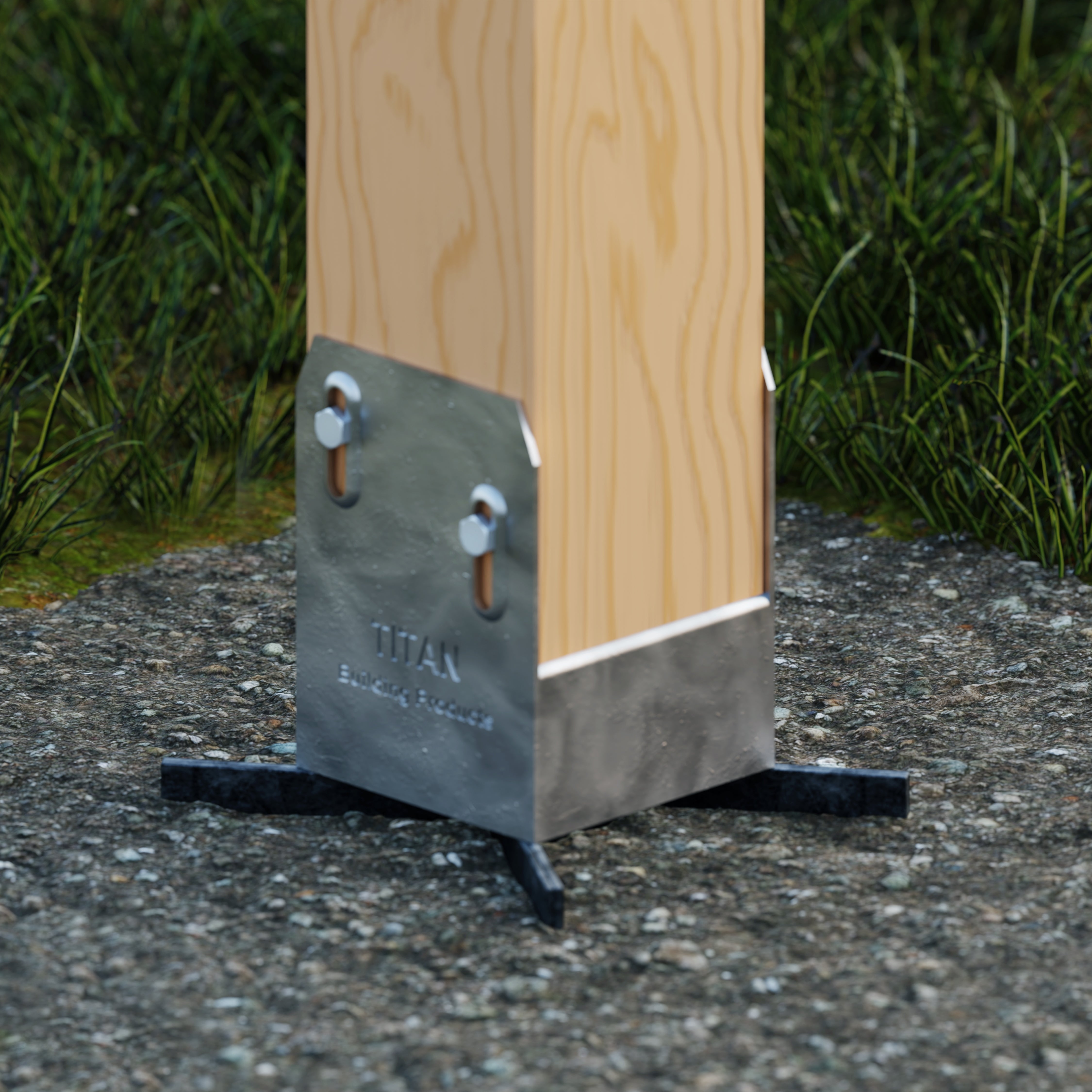
HOW IT WORKS
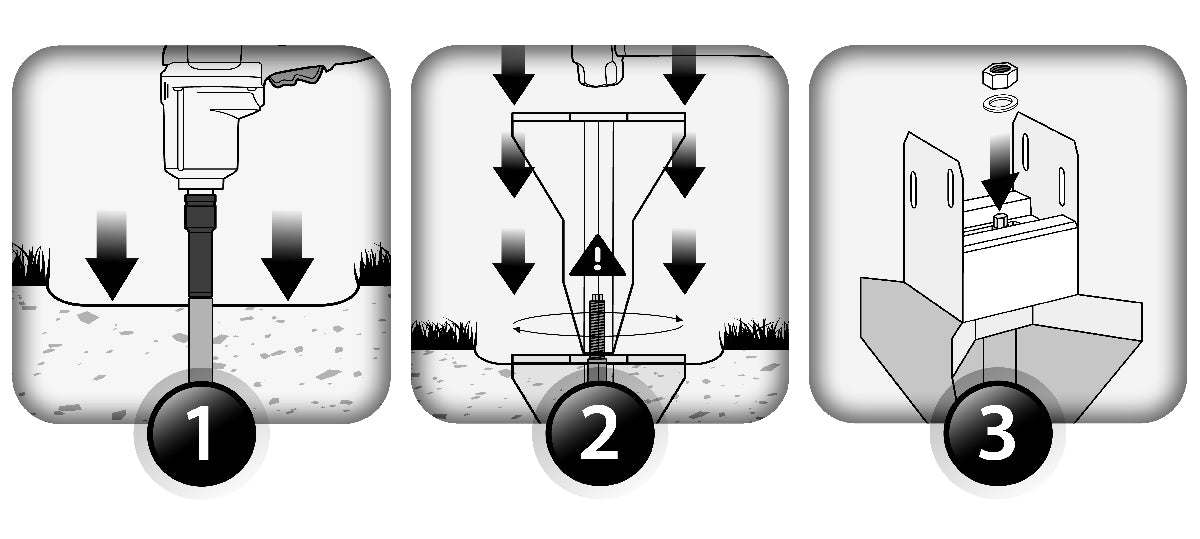
DRIVE
Using a lightweight handheld ½" electric impact wrench and a 12mm six point socket, drive the auger deep into the soil.
TIGHTEN
Drive the compression Load Fin over the auger and tighten the nut.
ATTACH
Adjust the post saddle in line with the beam. Tighten the upper nut to attach the saddle to the auger and Load Fin.
HERE IS HOW TO ORDER
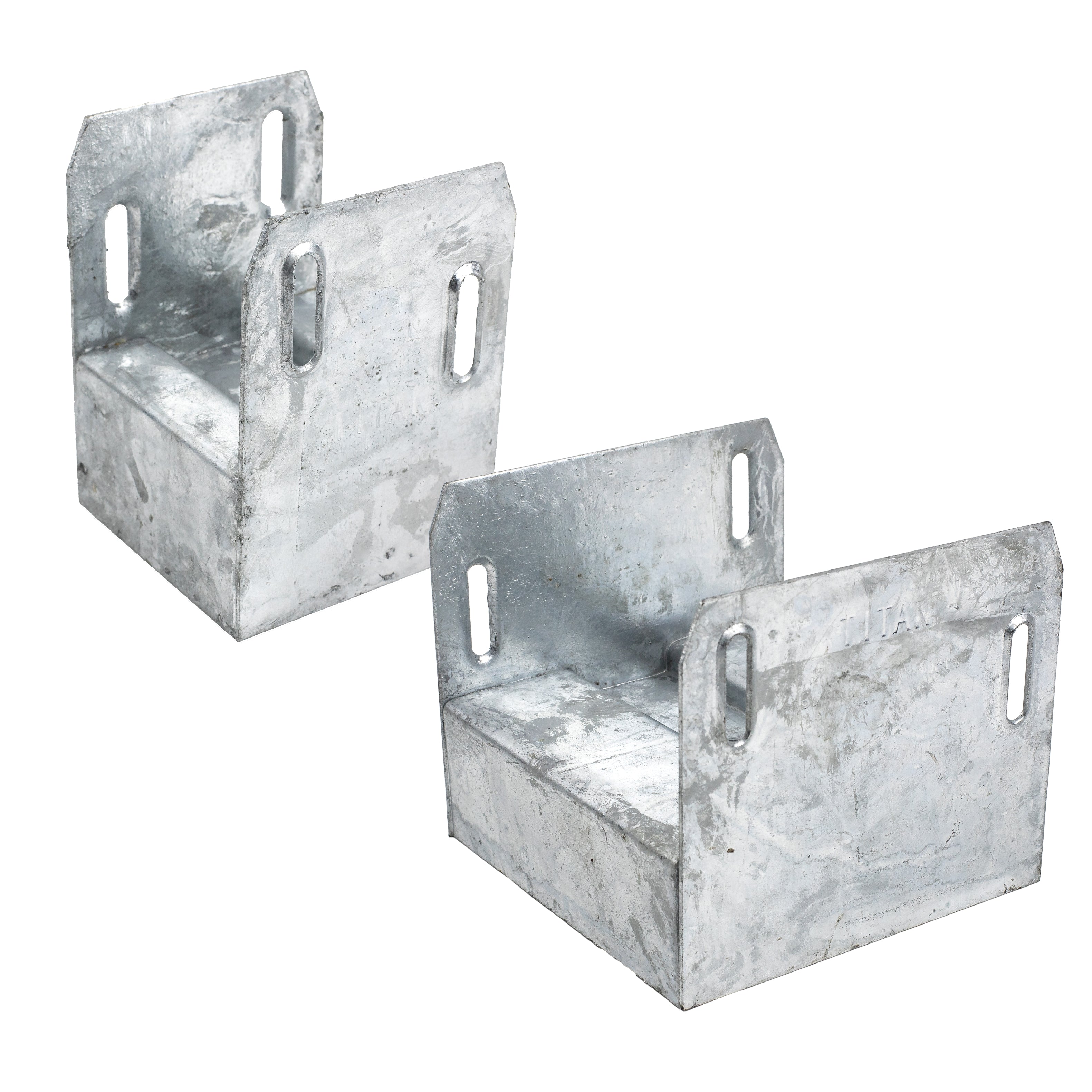
CHOOSE POST SADDLE
Available for 4X4 or 6X6 posts.
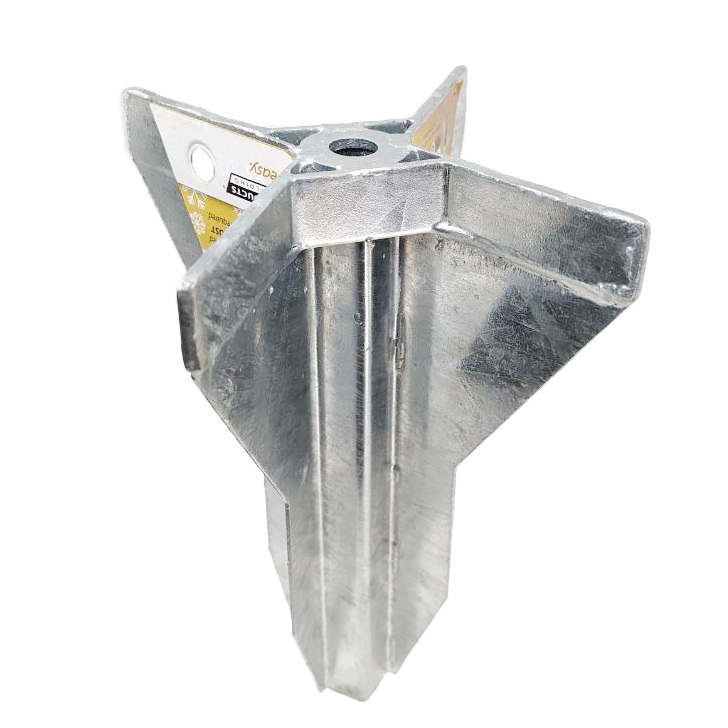
LOAD FIN
The compression Load Fin slides over the auger to distribute load from the post to the auger.
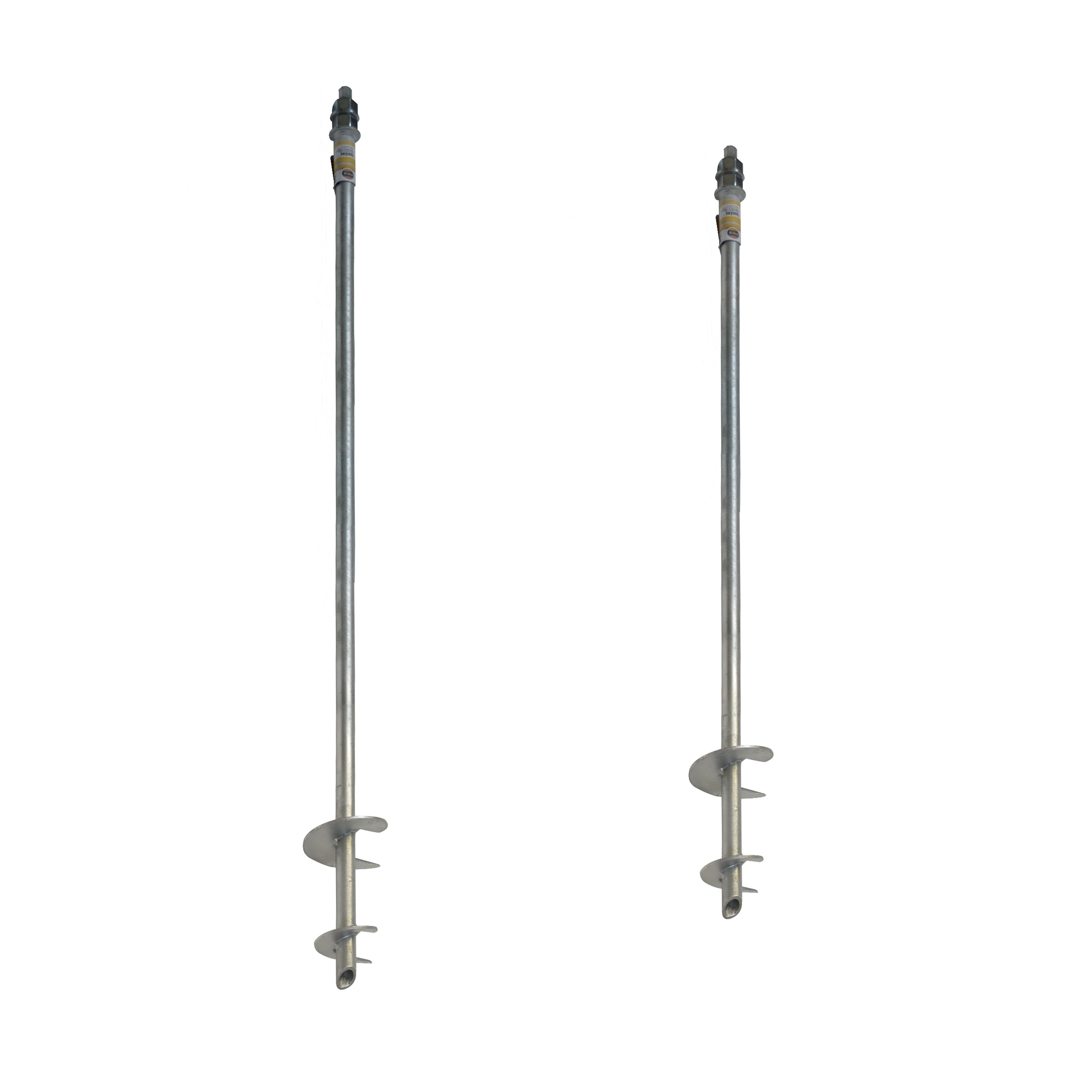
CHOOSE AUGER
Available in 3’ and 4’ lengths with 24” extensions to make 5’ and 6’ augers.
The Ledger Deck Foot Anchor uses an auger which drives into most soil types with the convenience of a hand held ½" impact wrench (18V or corded).
The compression Load Fin slides over the auger shaft and is embedded in the upper 12" of compacted soil using a sledge hammer or a modified 4x4 post. The edges of the Load Fin provide a surface for the Post Saddle to rest and distribute compression load to the auger and the blades.

Helical piles are a time-tested solution for all kinds of structures like houses, commercial buildings, bridges and more. They support very heavy loads. But they usually come with a heavy price tag too.
And if they are not installed precisely, it is difficult to adjust the post saddle to align with an overhead beam. Sometimes it's impossible and a site welded bracket has to be used.
But more importantly, in practical terms, you may be paying for way more than what common light weight residential structures need. The Ledger Deck Foot Anchor is an attempt to solve that dilemma.
The Load Fin is more than 6" at it's widest point, giving the otherwise narrow auger tube massive lateral resistance in the soil akin to a much larger diameter helical pile.
The auger can still be installed easily in most soil types with the convenience of a handheld ½" drive impact wrench (18v cordless or corded).
The Load Fin allows a 4x4 or 6x6 Post Saddle to adjust up to 2” to ensure multiple saddles are easily aligned under a common carrier beam –something that is not always easy – or possible - to do with heavier style piles.
Adjustability of the Post Saddle is what really differentiates this solution from the heavy duty engineered helical piles.
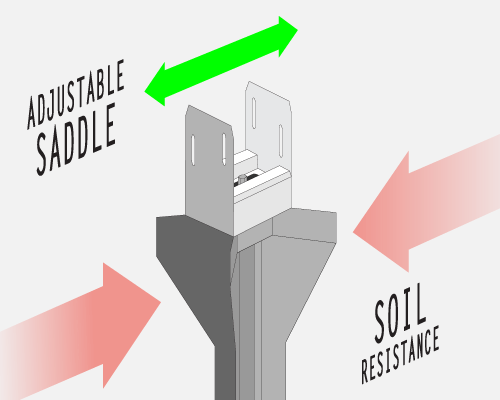

WILL AN AUGER WORK IN MY SOIL?
Some soil is not well suited for augers. The soil may be full of rocks, roots or other obstructions, or frozen. So you have to do some due diligence first to know if your soil is suited for this kind of solution.
The Ledger Deck Foot Anchor™ can be easily retracted and moved to a new location if you are unable to get past an obstruction.
However, if you are unsure about your soil use a 24" Bit Extender (or longer) with a 1" spade bit and a cordless drill. Try driving the bit into the ground as deep as it will go. This will tell you right away if an auger will work in your soil.
HOW MANY FOOTINGS DO I NEED
The Rule of Thumb is 4 feet to 5 feet (max.) apart for each of Ledger Deck Foot Anchor footings This corresponds to a design load of 50 psf (10 psf dead load, 40 psf live load) and tributary areas over each footing of 16-25 sqft. maximum.
The Ledger Deck Foot Anchor carries less than the Floating Deck Foot Anchor because the load is carried strictly by the helical blades (3-¼" dia. current model).
But the benefit is that it can be fully resistant to frost if set deep enough into the soil. And the post saddles are easily adjustable to align with an overhead beam.
Most important is to use enough to easily carry the expected loads. More is better than too few.
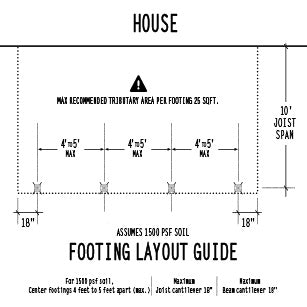
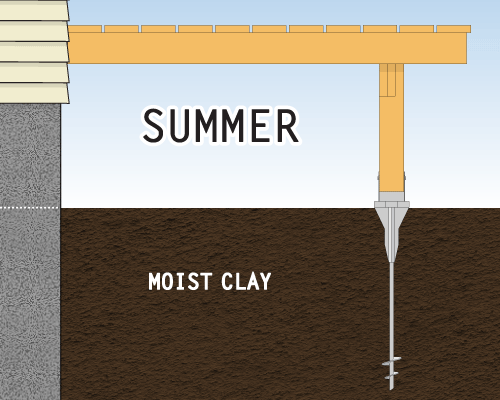
HOW DOES FROST AFFECT THE ANCHOR?
If the blades of the auger are driven below the frost line, the entire footing remains stationary even when moisture laden soil in the frozen expands upwards. That's because there is no flat cap on the Load Fin which differs from the Floating Deck Foot Anchor.
The open compression Load Fin allows a clear path for frozen soil to expand upward if it must while the helical blades still remain fixed in the soil below the frost line.
COMPRESSION LOAD
Our Intertek engineering crew travelled to the foothills of Colorado to test the load performance of our 36" auger because of the close proximity of both sandy and clay soils (least and most compressive).
The 36" auger is rated to a maximum of 1391 lbs (Clay) and 6285 lbs (Sandy). With a 48" auger, you can expect equal loads.
If the maximum rated load in clay is 1391 lbs, design your structure so each footing will carry between 700-1000 lbs as a safety margin. For a 50 psf design load on a structure, that translates to a loading zone over each footing of 3'-9" square to 5' square max. If you don't understand this, do not use this unless you have shared the Report with a professional engineer who can explain this.
Consider these numbers the best and worst case scenarios for the greatest range of soil types in North America. Be sure to use enough footings to support your intended weight with extra capacity.

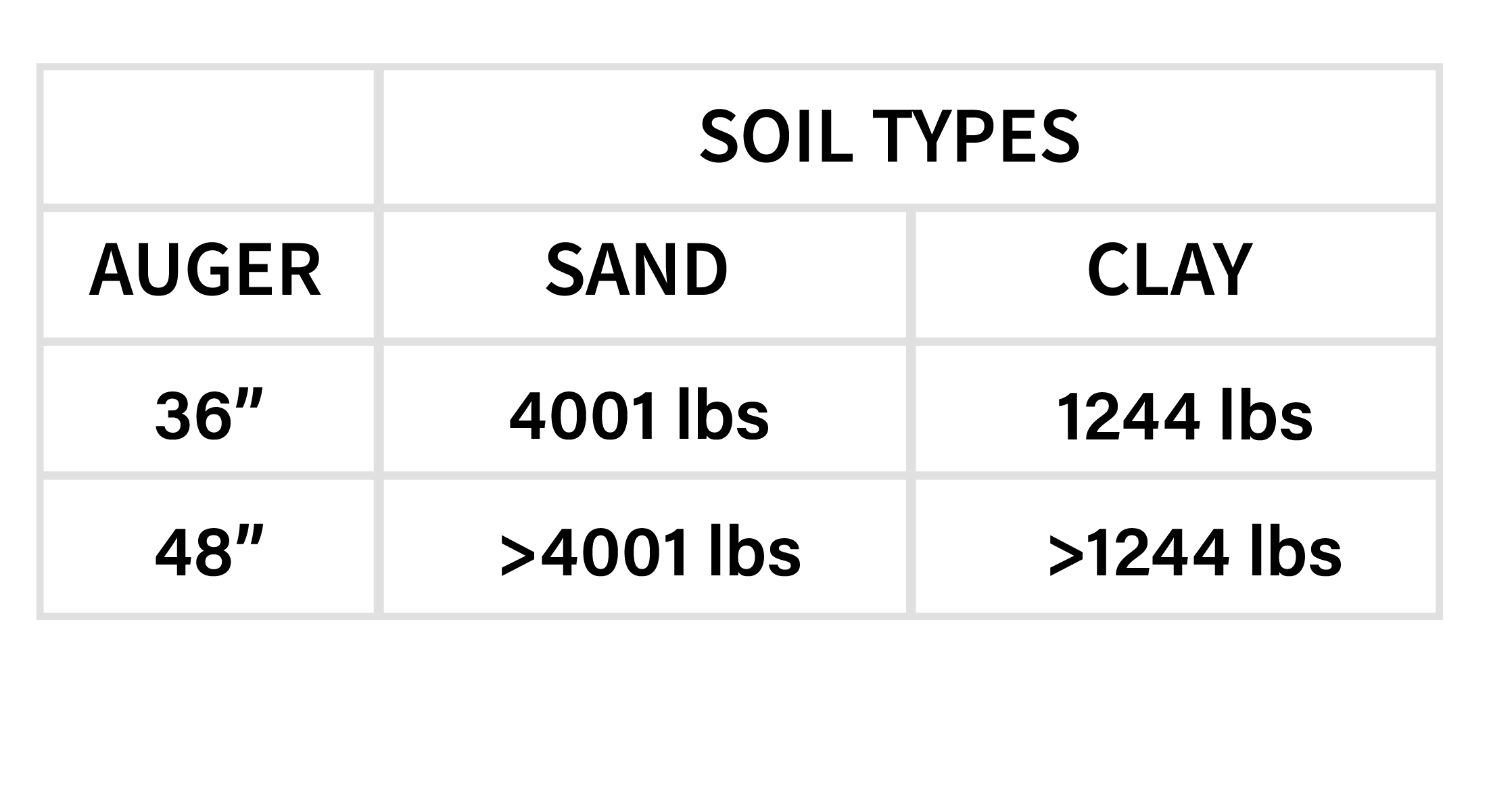
UPLIFT
Uplift forces are not as important on a ledger connected deck as they would be for a floating deck that might be more vulnerable to high winds.
A ledger connected deck is secured to the house and provides an additional degree of security in this respect.
However, the uplift data in the table shows the force required to pull the auger from the soil in each soil type depending on the length of the auger. Longer augers offer more uplift resistance because there is more soil above it.
DIMENSIONS


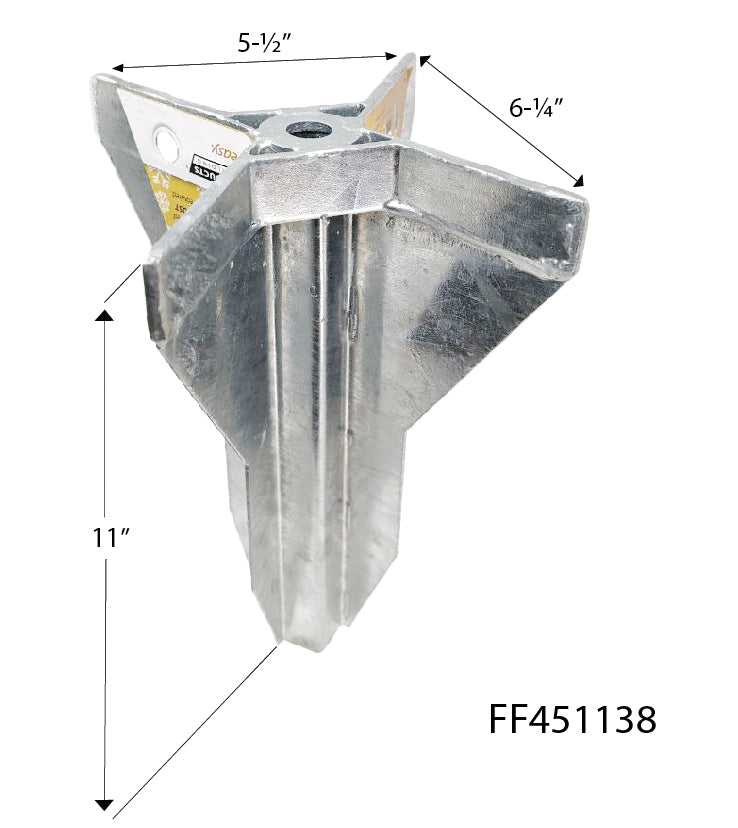
USE OUR IMPACT SOCKETS
Our 12mm high impact six point socket is designed to grip the hexagon drive head without stripping no matter the load.
This tiny investment can save headaches on the job site. If you use a low quality twelve point socket that does not fit as well, you are more likely to strip the drive head while under maximum load.
PRODUCT INSTALLATION GUIDES

Deck Foot Anchor - Ledger Instructions
Grab a copy of our installation guide and use it to help plan your project.
WARNING: Your experience with the Deck Foot Anchor is entirely dependent on your soil type. Rocks or roots or a weak impact wrench can prevent the auger from driving fully into the soil and an improperly sized socket can strip the driver head. Continuous torque for an extended period of time on the auger, once it has been stopped by a rock or immobile obstruction, can destroy the auger. The post saddles do not provide any significant lateral load resistance and should be used for compression load applications only.
- Choosing a selection results in a full page refresh.









































